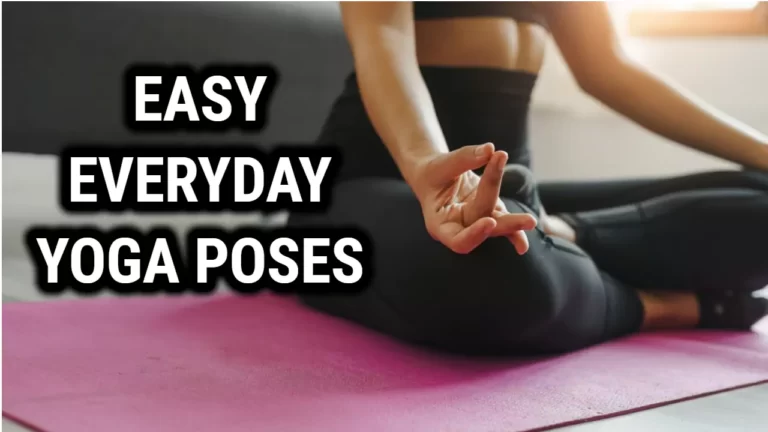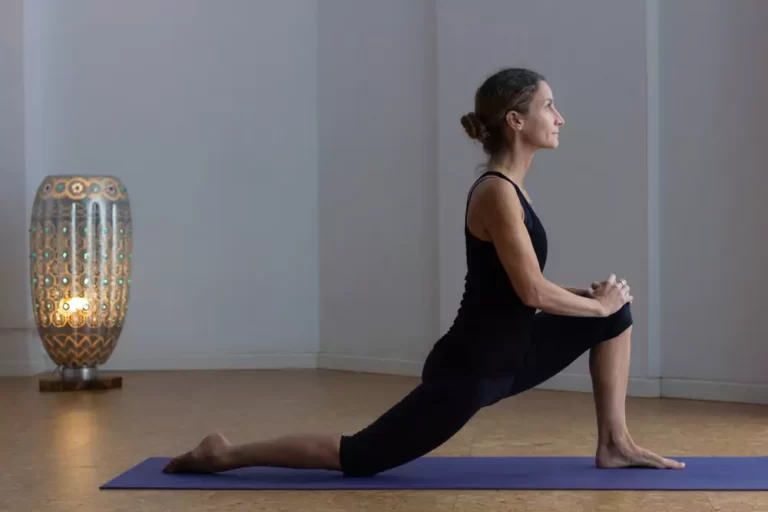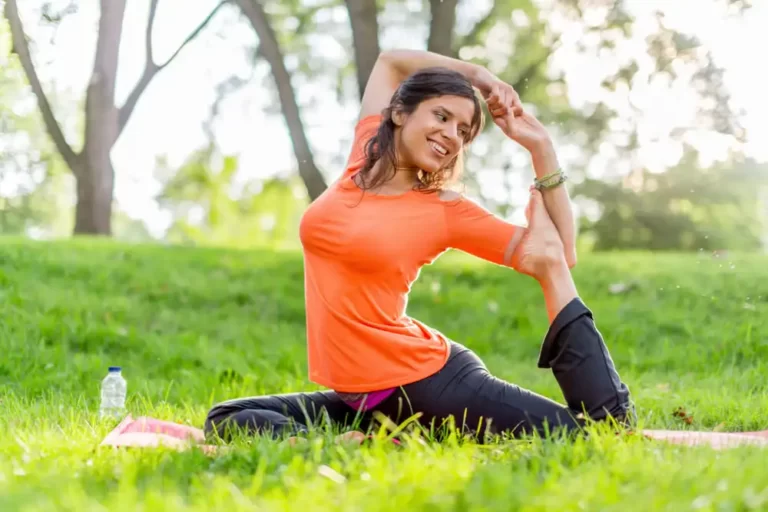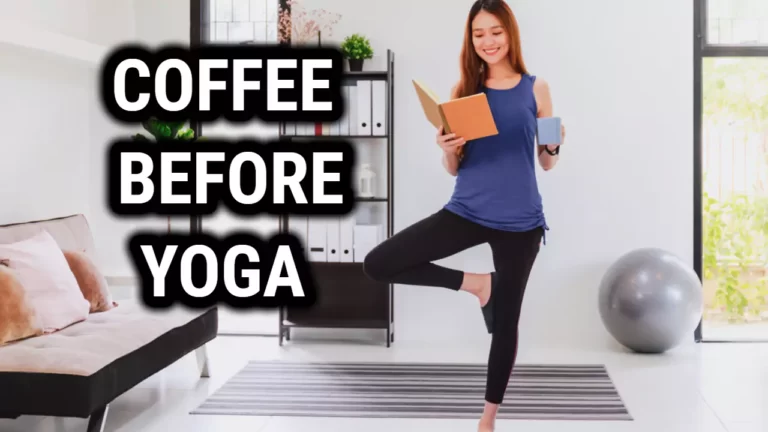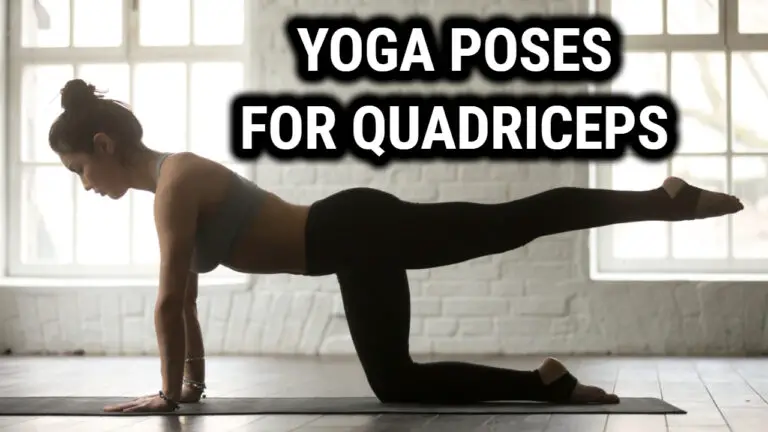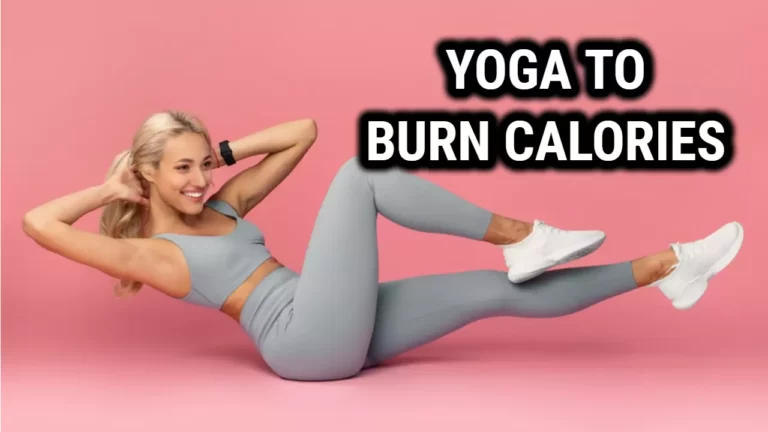What Is Hot Vinyasa Flow Yoga – The One Yoga Practice You Can’t Afford to Miss
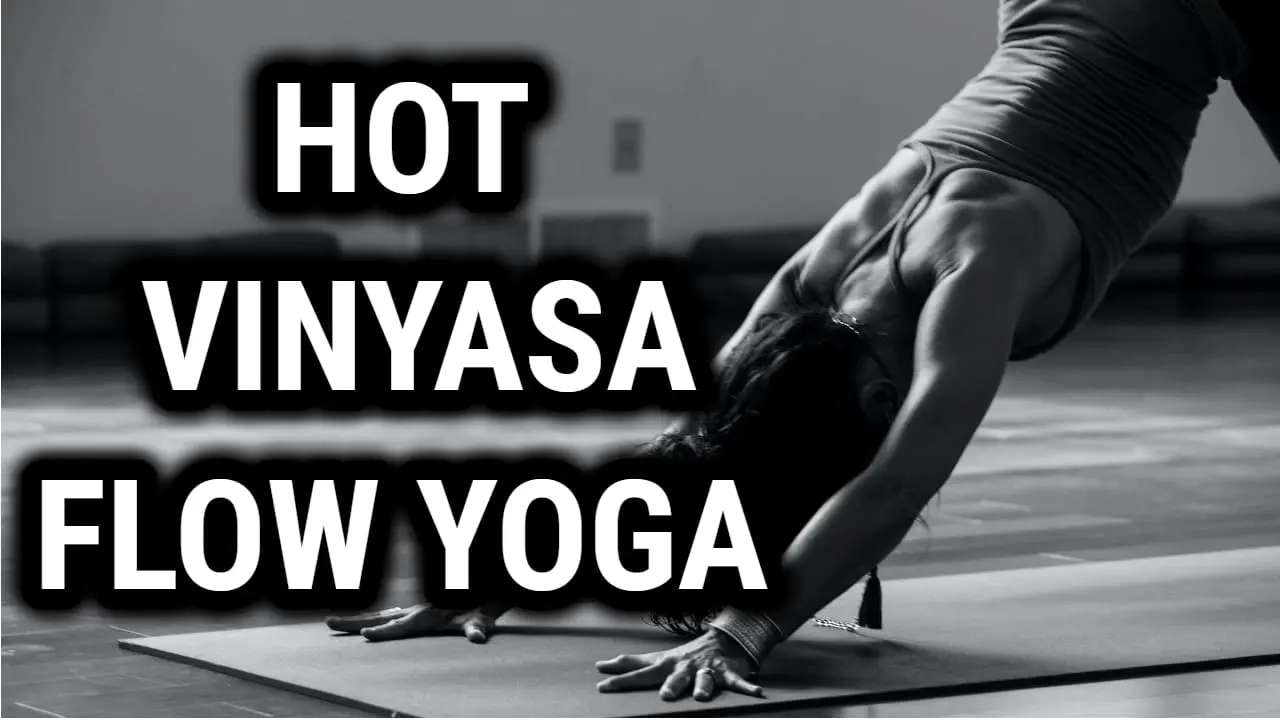
Have you ever heard of hot vinyasa yoga? It is becoming increasingly popular in the fitness world, with people from all walks of life looking to sweat it out and reap the many benefits.
Heated vinyasa yoga combines traditional yoga poses with a heated studio environment to create an intense workout that leaves participants feeling energized and rejuvenated. In this article, we will explore what hot vinyasa yoga is, its benefits and how to get started.
The practice of hot vinyasa yoga has been around for centuries, however it has recently gained popularity due to its ability to provide a full-body workout while also offering numerous physical and mental health benefits.
During a hot vinyasa class, practitioners are led through a series of poses that target different areas of the body while heat radiates from the studio walls. This combination helps to increase flexibility, strength, balance and endurance while reducing stress levels and improving concentration.
For those looking to try their hand at hot vinyasa yoga, there are several ways to get started. Many studios offer beginner classes where students can learn the basics of the practice in a safe and supportive environment.
Additionally, there are plenty of online resources available for those who would prefer to practice in their own homes or on their own schedules. No matter which route you choose, hot vinyasa yoga promises an invigorating experience that will leave you feeling energized and refreshed!
Benefits Of Hot Vinyasa Yoga
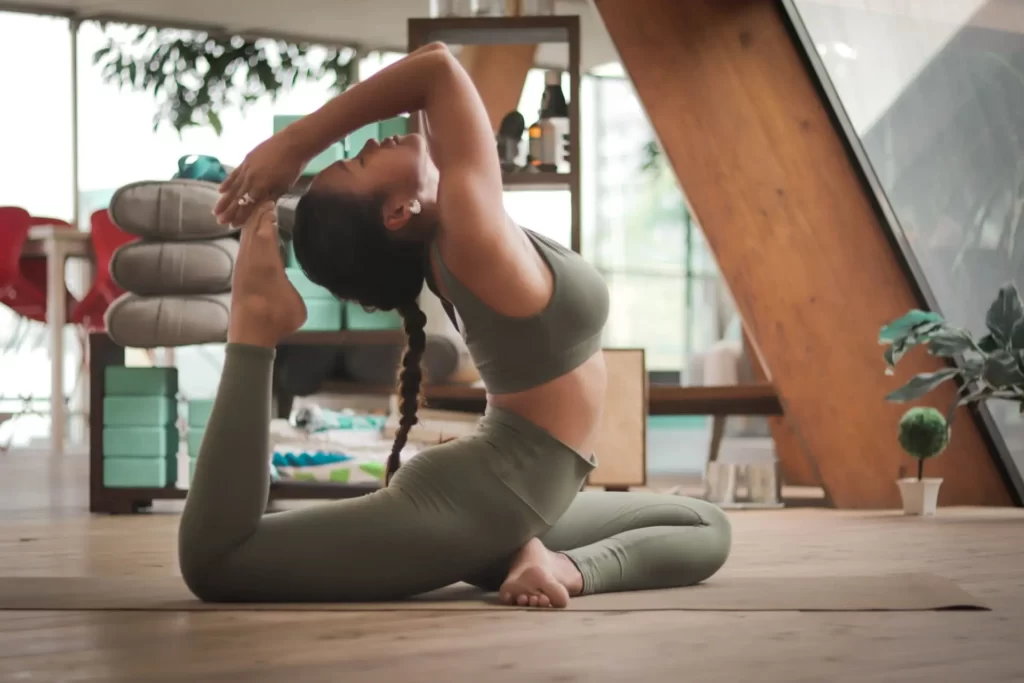
Hot vinyasa flow yoga is a type of practice that has quickly become popular around the world. This form of yoga utilizes a series of poses to create a fluid, continuous movement. Proponents believe that hot vinyasa yoga offers numerous health benefits and can help practitioners feel more connected to their bodies and minds.
But what is it about this type of practice that makes it so beneficial? Let’s take a closer look at the potential benefits of hot vinyasa flow yoga and what one might expect in a typical class.
One of the most immediate benefits of hot vinyasa flow yoga is its ability to leave practitioners feeling revitalized and energized. It combines intense postures with more gentle movements, allowing for an overall sense of well-being.
As practitioners become more comfortable with the poses, they are able to move through them with greater ease and precision. This allows for increased focus and concentration while still providing an effective workout.
In addition to the physical benefits, hot vinyasa flow yoga can also provide mental and emotional health benefits as well. By increasing oxygen levels in the body, this type of practice can help clear the mind and reduce stress levels.
Practicing hot vinyasa flow yoga can also lead to improved self-esteem, since it encourages practitioners to stay healthy and take care of themselves both physically and mentally. These mental health benefits are just as important as any physical gains from practicing this type of yoga.
The combination of physical exertion with mindfulness makes hot vinyasa flow yoga an ideal way for many people to stay healthy, both physically and mentally. With all these benefits in mind, let’s now explore what one might expect when attending a hot vinyasa yoga class.
What To Expect In A Hot Vinyasa Yoga Class
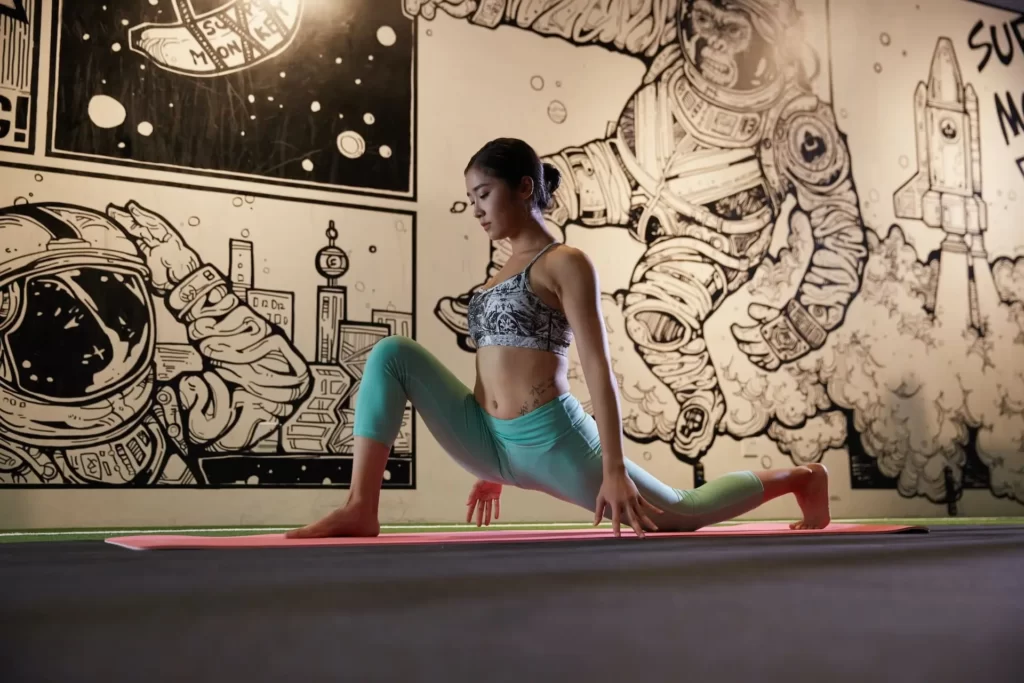
Combining intense postures with more gentle movements, practitioners of this yoga practice can reap both physical and mental health benefits. So what can one expect when attending a hot vinyasa yoga class?
When first entering a hot yoga studio, it’s important to keep in mind that you will be exercising in a room heated to a temperature of 80-100°F (26-38 °C). This heat helps to warm your muscles and increase flexibility for your poses.
Before beginning the practice, the instructor may encourage participants to set personal intentions that will help guide their practice. After this brief meditation, the class begins with some sun salutations and other stretches.
Throughout the class, participants will move through poses as they are guided by their instructor. Movements are often linked together with breath work in order to create an enjoyable flow and bring greater awareness to one’s body.
As poses become more challenging, modifications may be offered so that everyone in class can participate comfortably and safely. At the end of the session, there is usually time for relaxation or savasana where practitioners can take a few moments to reflect on their practice before heading home.
At its core, hot vinyasa flow yoga is about connecting mind and body while developing strength and flexibility. With all these aspects combined into one practice, it’s no wonder why hot vinyasa has become so popular among yogis around the world.
From experiencing improved mental focus to increased physical strength, hot vinyasa flow provides practitioners with numerous benefits – making it an ideal form of exercise for many. Now let’s explore some of the types of poses used in hot vinyasa flow classes so we can better understand this unique form of yoga.
Types Of Poses In Hot Vinyasa Flow
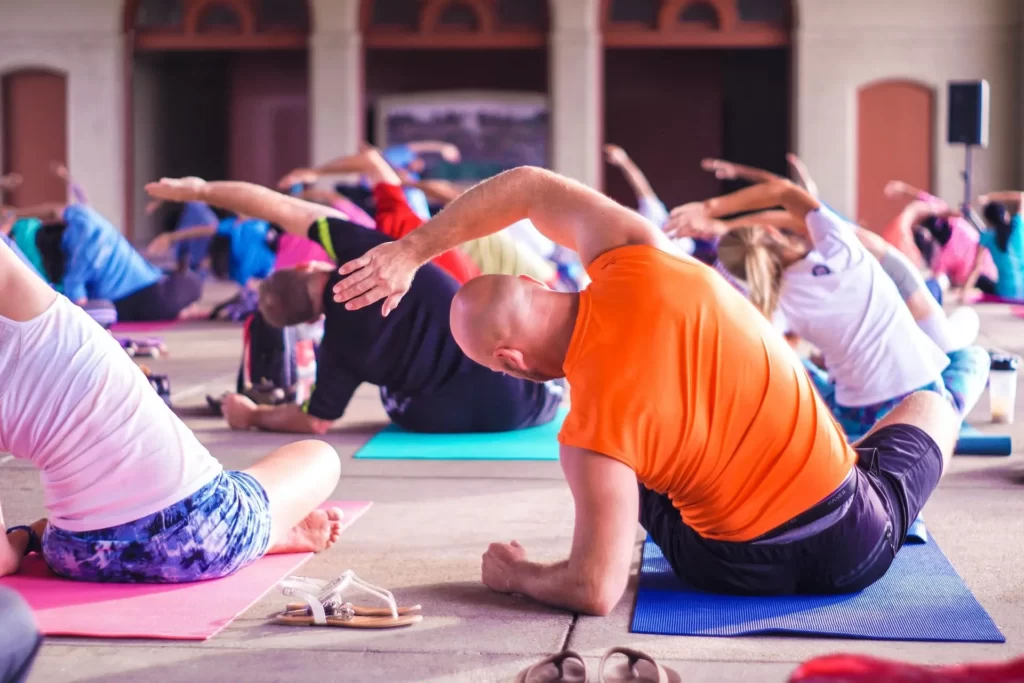
It’s time to take a closer look at the different types of poses used in hot vinyasa flow. From standing postures to balancing poses, this type of yoga incorporates a variety of movements and techniques. Here are just a few of the main poses you can expect to encounter when practicing hot vinyasa:
- Sun Salutations: This series of poses is typically the first set practiced in a hot vinyasa class. The sun salutation sequence helps to warm up the body while also improving flexibility and strength.
- Standing Poses: Standing postures such as Warrior I, Triangle Pose, and Chair Pose are all commonly used during hot vinyasa classes. These postures help to build core strength and balance.
- Balancing Poses: In addition to standing poses, balancing postures such as Tree Pose, Half Moon Pose, and Dancer’s Pose can also be found in hot vinyasa flow practice. These poses help to improve coordination and focus while helping practitioners develop mental clarity.
Practicing these various postures in a heated room creates an opportunity for participants to deepen their understanding of yoga while reaping numerous health benefits – making it an ideal form of exercise for many.
Moving on from here, let’s take a moment to compare two popular forms of heated yoga – Bikram and Hot Vinyasa Flow – so we can gain insight into which one may be better suited for our individual needs and goals.
Also Read: How to Effectively Practice Vinyasa Yoga: Tips and Techniques
Differences Between Bikram And Hot Vinyasa Flow
Though both Bikram yoga and Hot Vinyasa Flow are forms of heated yoga, there are some key differences between the two. Let’s explore these distinctions further so you can decide which type of practice is right for you.
The first and most obvious difference between Bikram and Hot Vinyasa Flow is their structure. Bikram classes, created by Yogi Bikram Choudhury, are composed of 26 postures and 2 breathing exercises that are practiced in a room heated to approximately 105 degrees Fahrenheit.
In contrast, Hot Vinyasa Flow classes feature a variety of poses that can change depending on the instructor’s preference. Additionally, the heat level in hot vinyasa classes typically ranges from 85-95 degrees Fahrenheit – slightly cooler than Bikram classes.
The second major distinction between these two types of yoga is their intensity level. While Bikram involves holding each posture for a specific length of time, allowing your body to adjust to the heat gradually, Hot Vinyasa Flow moves quickly with little rest in between poses – making it an intense workout designed to increase endurance and strength.
Given these differences, it’s important to consider your own preferences when choosing which type of practice is best for you. With an understanding of what makes each style unique, you’ll be able to make an informed decision about which form of heated yoga is best suited for your individual needs and goals.
Appropriate Clothing To Wear During A Class
When deciding what to wear for a yoga class, the type of practice and temperature of the room should be taken into consideration. For Bikram and Hot Vinyasa Flow classes, it is important to select clothing that is lightweight and breathable so sweat can evaporate quickly.
This will help keep you comfortable during such high-intensity workouts. Additionally, avoid wearing any fabric that sticks to your skin as this can cause discomfort while transitioning between poses.
For Bikram yoga specifically, it is best to opt for fitted clothing in order to ensure you are able to move freely throughout each posture. As Bikram classes are conducted in rooms heated up to 105 degrees Fahrenheit, selecting a moisture-wicking material such as spandex or polyester will help keep you cool and dry.
When participating in any type of hot yoga class it is important to stay hydrated before and after your practice session. Make sure to bring plenty of water with you to class and drink regularly during your practice – particularly if you feel dizzy or lightheaded at any point during the session.
With the right equipment and knowledge of proper safety protocols, your hot yoga experience can be enjoyable and rewarding!
Frequently Asked Questions
Do I Need To Be Flexible To Practice Hot Vinyasa Yoga?
Asking this is the first step towards unlocking a world of opportunity. To explore the possibilities, it’s important to understand what hot vinyasa yoga entails.
Hot vinyasa yoga is an energetic form of yoga that combines movement and breath for an invigorating experience. This style of yoga takes place in a heated room which increases flexibility, allows for deeper stretching and encourages sweating – all beneficial to the body. It’s also designed to balance strength, mobility and mindfulness through postures.
Therefore, although being flexible is beneficial for this type of practice, it isn’t essential. In fact, those who are less flexible may find that hot vinyasa helps them become more so as they progress with their practice. All you need is a willingness to learn and try something new; no matter how flexible you already are!
What Is The Temperature Of The Room During A Hot Vinyasa Yoga Class?
Hot Vinyasa Yoga is a type of yoga that takes place in a heated room. But what is the temperature of the room during this practice? It’s important to understand the temperature of the environment before you decide to attend a Hot Vinyasa class.
The temperature in the room can vary between 80-105 degrees Fahrenheit, depending on the studio and instructor. Some instructors may prefer to keep it slightly cooler than 105 degrees while others may raise it higher. Generally speaking, it’s best to expect temperatures around 95-100 degrees Fahrenheit for most classes.
Before taking a Hot Vinyasa class, it’s wise to check with the studio for their temperature guidelines so you know what to expect. This will help you make sure you’re prepared with appropriate clothing and hydration for your practice. Being mindful of how hot (or cool) the room is can help ensure a safe and enjoyable experience when practicing Hot Vinyasa Yoga.
Is There A Beginner-Friendly Version Of Hot Vinyasa Yoga?
Is there a beginner-friendly version of hot vinyasa yoga? Absolutely. Hot vinyasa yoga is a type of yoga that combines movement and breathwork in a heated environment, and it can be tailored to fit all levels of experience. Whether you’re just getting started or you’re looking to build on your current practice, hot vinyasa yoga offers something for everyone.
The great thing about hot vinyasa yoga is that it’s accessible and safe, even for the most inexperienced yogi.
Here are some key elements of this type of yoga:
- It’s designed to be low-impact so you can move at your own pace without straining your body
- You’ll learn proper alignment and breathing techniques to maximize each pose
- The heat helps relax tight muscles while boosting flexibility
- You get an intense calorie burn as well as mental clarity
Hot vinyasa yoga also offers plenty of modifications for those who may have limitations due to age, injury, or any other factor. This means that anyone can tailor their practice based on their individual needs in order to make the most out of every session.
With a supportive instructor and the right attitude, hot vinyasa yoga can offer a powerful physical and spiritual experience.
Are There Any Potential Health Risks Associated With Hot Vinyasa Yoga?
The potential health risks associated with hot vinyasa yoga are a concern for many.
The main risk of hot vinyasa yoga is dehydration. The combination of intense movement and heat can cause the body to lose a lot of fluids quickly, leading to dehydration if not managed properly.
Additionally, some people may find the heat too intense and can suffer from heat exhaustion or heat stroke. Proper hydration is essential to prevent these conditions from occurring.
Another risk associated with hot vinyasa yoga is the risk of injury due to overstretching or attempting poses that are too advanced for your current level of physical fitness. It’s important to take breaks during class and listen to your body if it’s telling you that a pose isn’t right for you at the moment.
Taking classes with an experienced teacher who can guide you through poses safely is also beneficial in avoiding potential injuries.
It’s important to remember that while hot vinyasa yoga can be very beneficial, it does come with certain risks that must be taken into consideration before engaging in this type of practice.
With proper preparation and safety precautions, those looking to participate in hot vinyasa yoga can do so without fear of serious injury or harm coming their way.
Are There Any Specific Dietary Restrictions For Practicing Hot Vinyasa Yoga?
Striking a balance between nutrition and exercise is essential for maintaining a healthy lifestyle, and this is especially true when it comes to hot vinyasa yoga. Like any other physical activity, practicing regular yoga can put a strain on the body, so it’s important to understand the dietary restrictions that come with this particular form of yoga.
To begin with, it’s important to avoid eating anything too heavy or greasy before a session of hot vinyasa yoga. Eating something like this will only weigh you down and leave you feeling sluggish during class.
Instead, opt for lighter options like fruits and vegetables as well as whole grains – all of which will provide your body with the energy it needs without making you feel weighed down. Additionally, make sure to stay hydrated throughout the day – not just during class – as dehydration can be very dangerous in a hot and humid environment.
When it comes to staying nourished while practicing hot vinyasa yoga, moderation is key. While exercising regularly requires an increase in calorie intake, overindulging can actually have negative effects on your performance in class.
Eating right is just as important as keeping up with your practice so make sure you’re mindful of what you eat and how much of it before each session.
It’s essential to be aware of the dietary restrictions that come with any physical activity but especially those associated with hot vinyasa yoga. Eating the wrong foods before class or overeating can leave you feeling drained or even cause potential health risks during practice – so it’s important to keep your diet balanced and moderate for maximum results!
Does vinyasa yoga tone your body?
Yes, Vinyasa yoga can help tone and strengthen the body. Vinyasa yoga is a dynamic style of yoga that involves flowing through a series of poses that are linked together with the breath. This style of yoga is often faster-paced than other styles and can be quite challenging, requiring the body to engage and activate many muscles.
Vinyasa yoga can help tone and strengthen the muscles in the entire body, including the arms, legs, core, and back. It can also improve balance and flexibility, leading to a more toned and sculpted physique.
Related Read: Vinyasa Yoga For Weight Loss: Why To Incorporate It Into Your Routine
Conclusion
Hot vinyasa yoga is a unique and challenging form of yoga that combines the heat of a heated room with an intense, dynamic flow. It can be intimidating for new practitioners, as it requires a high level of flexibility and stamina.
However, with proper guidance and preparation, hot vinyasa yoga can be a rewarding practice that offers numerous physical and mental benefits. From increased strength, improved range of motion, and enhanced cardiovascular health to reduced stress levels and improved concentration, hot vinyasa yoga has much to offer.
The journey through hot vinyasa yoga can be likened to a pilgrimage: challenging yet ultimately rewarding. The dedication required to make it through each class will not go unnoticed you’ll feel stronger both physically and mentally after each practice session.
So don’t be afraid to take the plunge into this invigorating practice you’ll be glad you did!
